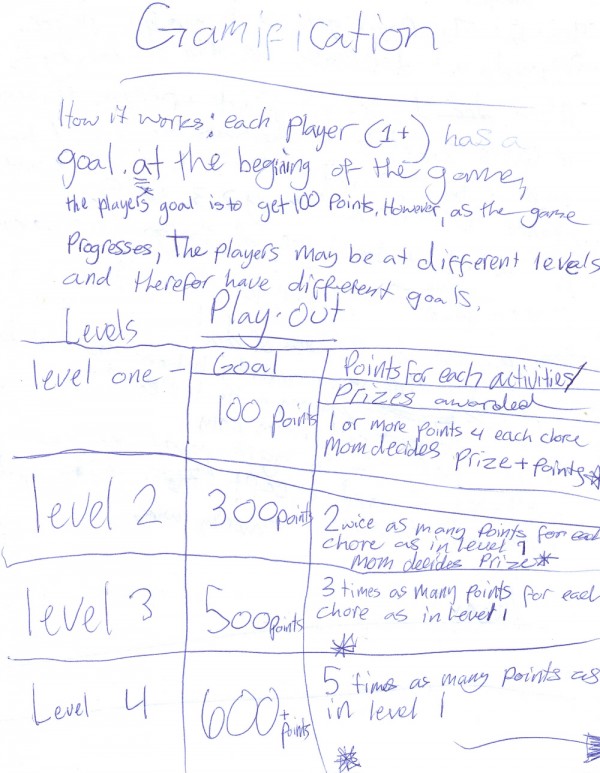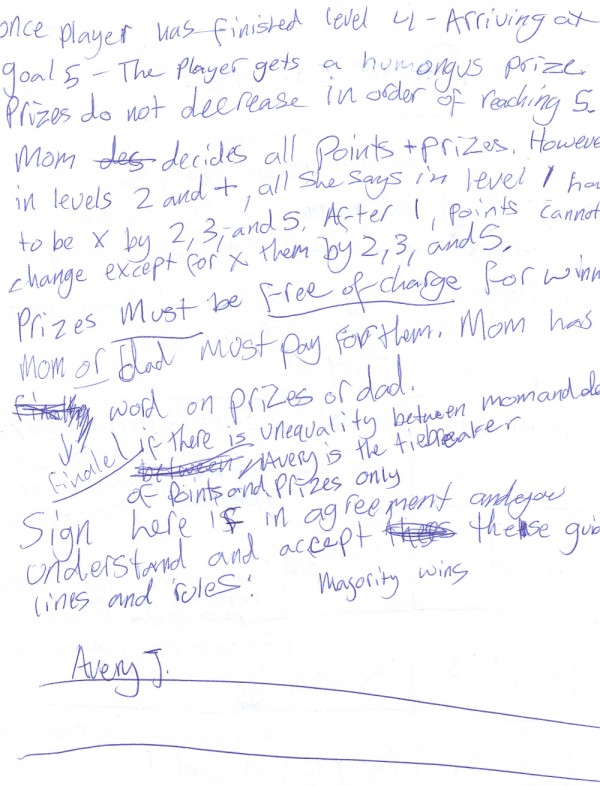Gamifying Chores
During our move from Utah to California, we had a lot of things to do – preparing our house to rent, packing, loading, driving, finding a place to rent, unpacking, and the million tasks in between, such as researching areas, renting a truck, and navigating directions. As I have four children under the age of 13, there wasn't much for them to do, and they kind of had to spectate and wait and watch as we moved.
We've never encouraged video games with our kids, but we let them use our iPhones, and the kids started downloading apps and occupying a lot of their time and attention playing simple little games. At first this was great, because the games seemed somewhat educational. Some games involved making and eating a cake, or dressing up a doll figure, or maintaining a farm, running and store and collecting gems, and so on.
Pretty soon our kids got more and more into these games, so that it wasn't just a few installed games, but more than 15, and my iPhone was constantly missing. As soon as I would set it down, a kid would grab it and start playing a game.
My wife and I were concerned that our once perfect children had been corrupted by video games, so I deleted all the games off my phone. My wife announced a policy that the children would be allowed one hour a week to play their favorite games on the phones.
When I told the kids I'd deleted all the apps and their data, they were furious. Callie, my eight-year-old, was angry that I'd deleted all the data that she had "worked" so hard to accumulate. How could I do this, Dad? She said I should have just changed my password to my phone (smart kid).
As I started my new job at Badgeville, I started thinking about gamification. I'm pretty sure that kids, if not adults too, are hardwired for games. I'd been involved in both Girl Scouts and Boy Scouts, and the whole setup of these programs is structured around games and badges.
For example, to get the Brownie painting badge, you have to do 5 activities (paint a still life, paint a mood, etc.). Scouting programs enjoy so much success because they gamify activities, and then provide status rewards in the form of badges for the scouts.
While my kids will play iPhone games for hours, they would rather pull their hair out than do the dishes or clean their rooms. But what if the chores were games? Perhaps if the chores were gamified, my kids might not resist the activities so much.
After all, I've learned to do the same with exercise. I don't enjoy running, but I love playing basketball, which is an exercise game. When you add a ball and some rules to an exercise, the game context changes everything. I can run up and down the court for hours, and I'll go at all lengths to play – even if I'm not feeling well.
First Attempts at Gamifying Chores
As a first attempt to gamify the chore list, I asked my 12-year-old to come up with an approach. After about 20 minutes, she came up with the following draft:
Avery puts an interesting spin on the chore game. As you increase to higher levels, you get more points for each chore. That makes things somewhat interesting.
If there's one pattern in games, it's that different levels present you with different challenges. The new adventure with each level you climb makes the game more interesting. The different levels often require you to formulate different strategies.
Rewards
We're still drafting out the chore game. What I'd like to move away from is the extrinsic reward in the form of prizes. Prizes are okay once in a while, but it's an extrinsic motivator. Ideally, I'd like the motivation to involve status. It's cheaper and potentially more motivating.
Here are a few ideas about status as a reward:
- Level 1 unlocks the Kid of the Week badge and earns you a collage of personal pictures displayed above the fireplace.
- Level 2 unlocks the Dinner Spotlight badge and lets you share about your day first at the dinner table, for as much time as you want.
- Level 3 unlocks the Head Chef badge and allows you to choose the dinner menu one night a week.
- Level 4 unlocks the Gameshow Host badge and lets you choose the game during family home evening night.
- Level 5 unlocks the Travel Agent badge and lets you choose the family activity on Saturday (such as going to the beach, park, museum, or elsewhere).
- Level 6 unlocks the Computer Whiz badge and gives you an hour on the computer each day.
- Level 7 unlocks the Movie Critic badge and lets you pick the movie on Friday night movie night.
- Level 8 unlocks the Adventure badge and earns you a Daddy-daughter or Mommy-daughter date.
- Level 9 unlocks the Willy Wonka badge and lets you reach blindly into a candy bucket after dinner.
- Level 10 unlocks the Bookworm badge and lets you choose a new book at Barnes and Noble.
Most of these badges won't bankrupt you, except for level 10, which has to be a little more special than the others. Theoretically, the levels should get harder and harder. Perhaps each level represents 10 points, with each chore holding a single point value.
Some ways kids might earn points include the following chores:
- Make sandwiches for everyone's lunch (1 point).
- Put away the dishes (1 point).
- Clear the table (1 point).
- Put away your laundry (1 point).
- Read books to Molly (1 point).
- Clean your room (1 point).
- Sweep the floor (1 point).
- Brush your teeth before school (1 point).
- Set the table (1 point).
- Help someone with her homework (1 point), and so on.
In gamification speak, these are the behaviors we want to reward. The challenge is to move beyond a simple points and reward system to something more interesting, strategic, and game-like. We're not there yet. There's not any strategy to the game, and without strategy, it's not really game-like.
(By the way, in exploring strategies, we do want to avoid motivating the girls to compete against each other as students do in classes with curved grading. Ideally, we'd like to reward sisters for helping each other.)
I'm curious to hear if you've implemented any successful chore games to incentive your children.
About Tom Johnson

I'm an API technical writer based in the Seattle area. On this blog, I write about topics related to technical writing and communication — such as software documentation, API documentation, AI, information architecture, content strategy, writing processes, plain language, tech comm careers, and more. Check out my API documentation course if you're looking for more info about documenting APIs. Or see my posts on AI and AI course section for more on the latest in AI and tech comm.
If you're a technical writer and want to keep on top of the latest trends in the tech comm, be sure to subscribe to email updates below. You can also learn more about me or contact me. Finally, note that the opinions I express on my blog are my own points of view, not that of my employer.



